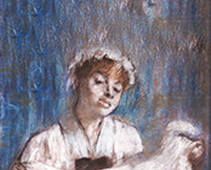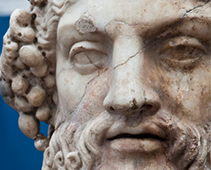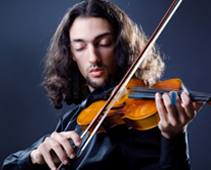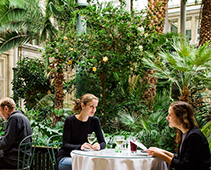The Danish sculpture collection demonstrates a quest for new ideals and standards both in terms of motifs and the treatment of forms in sculpture.
SCULPTURE AFTER 1850
DANISH SCULPTURE AFTER THORVALDSEN AND NEO-CLASSICISM
The founder of the Glyptotek, the brewing magnate Carl Jacobsen (1842-1914), was deeply interested in the sculpture of his day and wanted the Glyptotek to be an exhibition showcase for the best sculptors of the age. This desire was realised as a great collection of works created by the Thorvaldsen pupils Freund, Bissen and Jerichau.
The collection demonstrates a quest for new ideals and standards both in terms of motifs and the treatment of forms in sculpture. The legacy of the internationally renowned Thorvaldsen may have felt too heavy to lift, but the result is fascinating. The human body in clay, plaster and wood offers a retelling of Norse mythology and biblical morality in art, but social realism also features as a motif. Form and content approach each other in a spiralling symbolism with credible representations of human destinies rendered in the gestures and poses of sculpture. Dramatically wrenched bodies, faces full of expression and a sensuous nudity herald the beginning of modern sculpture in Denmark.




